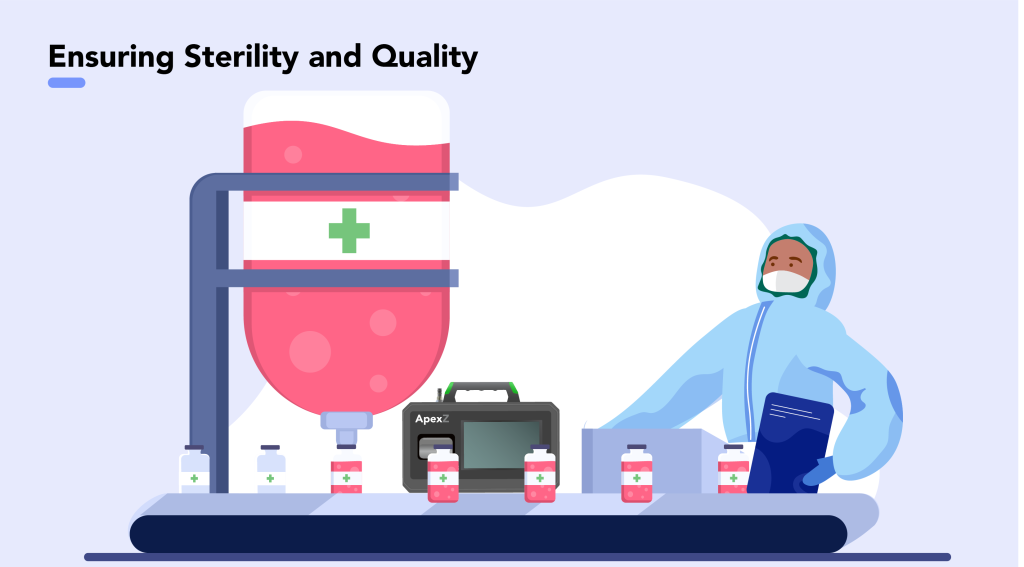Pharmaceutical injectable aseptic injections are essential medical products that are administered through injections, directly into the body. The manufacturing process for these injectable drugs is a meticulous endeavor, requiring stringent control measures to ensure they remain free from any microbial contamination or particles that could compromise patient safety. In this article, we’ll delve into the intricate process of manufacturing pharmaceutical aseptic injections, highlighting key stages and validation procedures to maintain sterility and quality.
1. Preparation: Setting the Foundation for Sterile Manufacturing
The journey begins with meticulous preparation to establish a sterile manufacturing environment.
Equipment Preparation: All equipment, tools, and supplies that will be utilized during the manufacturing process are rigorously cleaned and sterilized. This is vital to prevent any introduction of contaminants during production.
Personnel Preparation: Proper training in aseptic techniques, gowning procedures, and hygiene practices is given to personnel involved in the process. Their adherence to these practices is key to maintaining sterility.
Facility Preparation: The manufacturing environment is readied with the right air filtration and ventilation systems. A clean and organized workspace ensures the foundation of aseptic manufacturing. Particle counters and air samplers are employed to certify the cleanroom and to continually monitor and verify the aseptic conditions during manufacturing operations.
2. Mixing: Ensuring Homogeneity in a Sterile Environment
Creating a uniform mixture of ingredients is the essence of the mixing stage. To prevent contamination, this process is carried out within a sterile environment, often using laminar flow hoods or isolators. Sterile containers hold the ingredients, mixed using aseptic techniques. Specialized equipment like agitators or homogenizers are employed to ensure thorough blending.
3. Filtration: Removing Microorganisms and Particles
Filtration plays a critical role in eliminating microorganisms and particles. This process involves passing the drug solution through a series of filters with progressively smaller pore sizes. These filters, composed of materials like nylon or polytetrafluoroethylene (PTFE), effectively remove particles as small as 0.2 microns. Regular filter integrity testing ensures their efficacy. This filtration is used to remove harmful particles from the product since in some cases the product cannot be terminally sterilized.
4. Filling: Maintaining Sterility During Packaging
The filling stage aims to preserve sterility as the drug product is transferred into containers. This can involve automated filling machines or manual processes with sterile pipettes or syringes. The controlled environment, such as a laminar flow hood, minimizes contamination risks. Monitoring using particle counters and air samplers at crucial locations along the filling line is vital.
5. Capping and Sealing: Preventing External Contamination
Once filled, containers are capped and sealed to prevent air or moisture from entering. Crimping, screw capping, and stoppering are common methods. The capping and sealing processes occur in a sterile environment using validated equipment to maintain the product’s integrity.
6. Quality Control: Ensuring the End Product Meets Standards
The final product undergoes rigorous quality control testing to guarantee purity, potency, and sterility. These tests include physical, chemical, and microbiological assessments. Any deviations from required specifications are investigated and rectified before release.
Validation: The Backbone of Aseptic Manufacturing
Validation is a cornerstone of aseptic manufacturing. Various procedures need validation to ensure that they consistently deliver the desired outcomes. These include:
Environmental Monitoring: Regular testing of the manufacturing environment helps identify contamination sources and assess cleaning procedures’ effectiveness.
Sterilization Validation: Methods like steam sterilization, gamma irradiation, and ethylene oxide sterilization require validation to ensure their efficacy in killing microorganisms.
Filtration Validation: Filters must be validated to confirm their capacity to remove microorganisms and particles.
Analytical Method Validation: Testing methods used to assess product quality require validation to ensure accuracy and reliability.
Conclusion: The Road to Safe and Effective Pharmaceuticals
The aseptic manufacturing process for pharmaceutical injectable products is a complex journey, demanding precision, adherence to guidelines, and continuous monitoring. From meticulous preparation and sterile mixing to comprehensive filtration, filling, sealing, and rigorous quality control, every step plays a crucial role in ensuring the final product’s safety, purity, and potency. When injectables are delivered into the patients bloodstream directly bypassing the natural immune system the safety of the solution is critical. Validation procedures act as safeguards, guaranteeing that each stage consistently meets the stringent standards set for pharmaceutical products. Particle Counters and Air Samplers play a vital role in this process. By following these procedures, pharmaceutical manufacturers can confidently deliver products that meet regulatory requirements and prioritize patient safety above all else.


